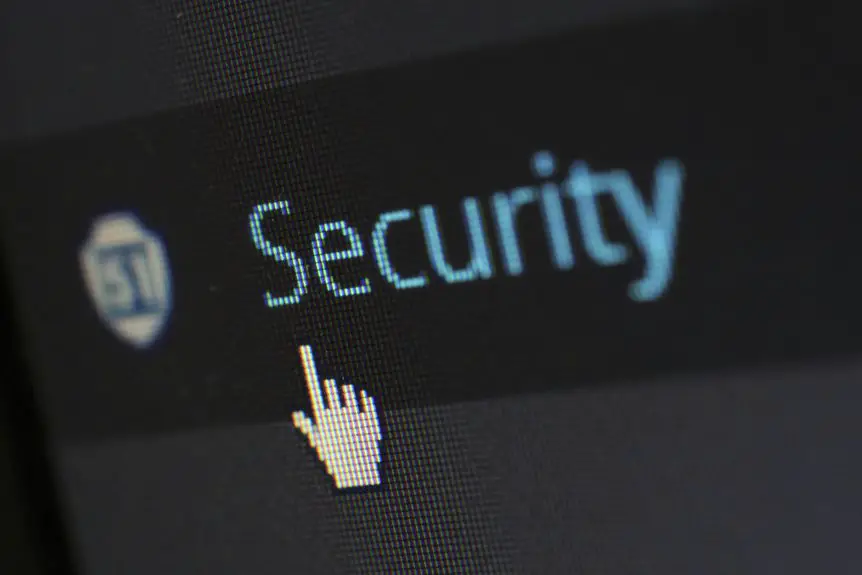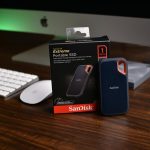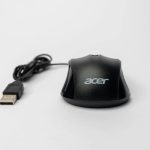When it comes to achieving ultimate precision with your mouse cursor speed, it's essential to tailor the settings to fit your unique needs. Whether you're gaming or working on intricate designs, finding the right balance can make a significant difference. By following a few simple steps, you can customize your mouse settings for optimal performance. Let's explore how to refine those settings to enhance your experience and productivity.
Table of Contents
Key Takeaways
- Access mouse settings through your operating system's settings menu to adjust cursor speed accurately based on your preferences.
- For precision tasks, lower cursor speed is recommended to allow for careful and detailed movements without overshooting.
- Adjust DPI settings on gaming mice to find the right balance between speed and accuracy for your gaming style.
- Regularly test and reassess your settings as tasks change to ensure optimal cursor control and comfort during use.
- Enable features like "Enhance pointer precision" for improved responsiveness, especially useful in graphic design and precise applications.
Understanding Mouse Cursor Speed
Mouse cursor speed plays a crucial role in your overall computer experience. It directly affects how quickly and accurately you can navigate your screen.
If your cursor moves too slowly, you might find yourself frustrated, trying to reach icons or links. Conversely, if it's too fast, you could accidentally click the wrong things.
Finding the right speed is essential for comfort and efficiency. It's about striking the perfect balance that fits your personal preferences and tasks.
For gamers, a faster speed can enhance gameplay, while graphic designers may prefer a slower, more controlled speed for precision.
Ultimately, understanding mouse cursor speed helps you tailor your setup for a smoother, more enjoyable computing experience.
Accessing Mouse Settings on Your Device
How can you easily access mouse settings on your device?
First, if you're using Windows, click on the Start menu and select "Settings." From there, choose "Devices," and then click on "Mouse."
If you're on a Mac, go to the Apple menu, select "System Preferences," and then click on "Mouse." This will bring you to the mouse settings, where you can explore various options.
For Chrome OS users, click on the time in the bottom right corner, select the gear icon, and find the mouse settings under "Device."
Once you're in the right section, you can start tweaking your preferences to enhance your mouse experience.
Don't hesitate to explore all available features for optimal comfort!
Adjusting Cursor Speed on Windows
To adjust the cursor speed on Windows, you'll first want to navigate to the mouse settings you accessed earlier.
Once you're in the settings, look for the "Pointer Options" tab. Here, you'll find a slider labeled "Select a pointer speed." Move the slider left to decrease speed or right to increase it, depending on your preference.
As you adjust the speed, the changes will be reflected in real-time, so test it out to see what feels right for you. Don't forget to click "Apply" to save your settings.
If you want even more precision, consider enabling the "Enhance pointer precision" option, which can improve responsiveness during finer movements.
Happy customizing!
Customizing Mouse Cursor Speed on Mac
Customizing your mouse cursor speed on a Mac is simple and straightforward.
You can access mouse settings through System Preferences, where you can adjust tracking speed and fine-tune acceleration options.
With just a few tweaks, you'll have your cursor moving exactly how you like it.
Accessing Mouse Settings
Ever wondered how you can make your mouse cursor move faster or slower on your Mac? Accessing the mouse settings is simple and quick.
Start by clicking on the Apple logo in the top-left corner of your screen, then select "System Preferences" from the dropdown menu.
Once you're in System Preferences, look for the "Mouse" icon and click on it. Here, you'll find various options related to your mouse, including tracking speed, scrolling speed, and more.
These settings allow you to customize how your mouse behaves, ensuring you have the precision you need for any task.
Don't forget to experiment with the settings until you find the perfect balance for your workflow!
Adjusting Tracking Speed
When you need your mouse cursor to respond more precisely to your movements, adjusting the tracking speed on your Mac is the key. To do this, head to System Preferences, then click on Mouse. You'll find a slider for tracking speed. Moving it to the right speeds up the cursor, while moving it left slows it down. Experiment with different settings until you find your sweet spot.
Here's a quick reference table to help you understand the adjustments:
| Setting | Effect |
|---|---|
| Slow (Left) | More control, less speed |
| Medium | Balanced speed and control |
| Fast (Right) | Quick movements, less control |
| Custom | Tailored to your preference |
With these adjustments, you'll gain better precision in your movements.
Fine-Tuning Acceleration Options
Adjusting the tracking speed is just the beginning of refining your mouse experience on a Mac.
To truly enhance precision, you'll want to fine-tune your acceleration options. This allows your cursor to respond dynamically based on how fast you move your mouse.
Here's how to optimize your settings:
- Open System Preferences: Click on the Apple menu and select "System Preferences" to access mouse settings.
- Adjust Acceleration Curve: Use third-party applications like SteerMouse or USB Overdrive to customize the acceleration curve, giving you control over sensitivity at different speeds.
- Test and Tweak: After adjustments, test your new setup in various applications, refining as needed for comfort and precision.
With these tweaks, you'll enjoy a smoother, more responsive cursor experience!
Fine-Tuning Settings for Gaming
To enhance your gaming experience, fine-tuning mouse cursor speed settings is essential. The right settings can improve your responsiveness and accuracy during gameplay. Start by adjusting your DPI (dots per inch) to suit your play style. A higher DPI allows for faster movement, while a lower DPI offers more precision. Combine this with adjusting your in-game sensitivity for optimal performance.
Here's a quick reference table to help you determine the best settings:
| Play Style | Recommended DPI | In-Game Sensitivity |
|---|---|---|
| Sniper | 400-800 | Low (1-3) |
| Tactical Shooter | 800-1600 | Medium (4-6) |
| Fast-Paced | 1600-3200 | High (7-10) |
| MMO | 800-1200 | Variable |
| Casual | 1200-1600 | Medium (4-6) |
Experiment with these settings to find what works best for you!
Enhancing Precision for Graphic Design
Since graphic design often requires meticulous detail, enhancing your mouse cursor speed settings can significantly improve your workflow.
You'll find that a well-tuned cursor speed allows for smoother navigation and greater precision when working on intricate designs.
Here are three tips to enhance your experience:
- Adjust to Your Comfort: Start with a lower speed and gradually increase until you find the sweet spot that feels fluid yet controlled.
- Utilize Acceleration: Enable mouse acceleration to give you finer control during detailed tasks, allowing for quick movements when needed.
- Test Different Surfaces: Use a high-quality mouse pad to ensure consistent tracking, which can lead to better precision in your designs.
With these adjustments, you'll notice a significant boost in your design efficiency.
Testing Your New Cursor Speed Settings
Now that you've adjusted your cursor speed, it's time to test how it performs.
Use precision tracking tools to see if your new settings enhance your accuracy, especially for tasks like graphic design.
Use Precision Tracking Tools
Testing your new cursor speed settings is crucial for achieving optimal precision while using your computer.
To truly gauge how well your adjustments work, you should utilize precision tracking tools. These tools help you assess your cursor's responsiveness and accuracy.
Here are three effective methods to consider:
- Target Practice: Use a simple drawing app to aim at small targets on the screen. This will reveal how accurately you can click.
- Speed Drills: Set up a series of quick tasks, like dragging and dropping items, to test your cursor's speed consistency.
- Gaming Scenarios: Play a first-person shooter or strategy game to experience real-time navigation challenges.
Adjust for Different Tasks
Adjusting your cursor speed settings can make a significant difference depending on the tasks you tackle. For graphic design or intricate gaming, you'll want a slower cursor speed for precision. This allows you to make detailed adjustments without overshooting your target.
On the other hand, for general browsing or office work, a faster cursor speed can enhance your efficiency, letting you navigate quickly between windows and documents.
Test your settings by switching between tasks. Notice how your cursor responds. If you find yourself struggling to control your movements during precision work, slow it down.
Conversely, if you're frequently overshooting during casual tasks, speed it up. Tailoring your settings to fit specific tasks ensures you achieve optimal performance and comfort.
Frequently Asked Questions
How Does Mouse Cursor Speed Impact Gaming Performance?
Mouse cursor speed significantly impacts your gaming performance. If it's too fast or slow, you'll struggle with aiming and precision. Finding the right balance enhances your control, making it easier to react and succeed in games.
Can I Use Mouse Acceleration for More Precision?
You can use mouse acceleration for precision, but it may complicate your aiming. It alters sensitivity based on speed, which can lead to inconsistent movements. Many gamers prefer a steady speed for better control and accuracy.
What Is the Ideal Cursor Speed for Graphic Design?
The ideal cursor speed for graphic design balances accuracy and fluidity. You'll want to adjust it to a level that feels comfortable, allowing you to make precise movements without sacrificing speed or control. Experiment till it's perfect!
Does My Mouse Type Affect Cursor Speed Settings?
Yes, your mouse type definitely affects cursor speed settings. Different mice have varying sensors and DPI capabilities, which can influence how responsive and accurate your cursor movements feel, especially during detailed tasks like graphic design.
How Can I Reset My Cursor Speed to Default?
To reset your cursor speed to default, go to your mouse settings in the control panel. Look for the speed adjustment slider and click "Restore Defaults." Your cursor speed will return to its original setting.




